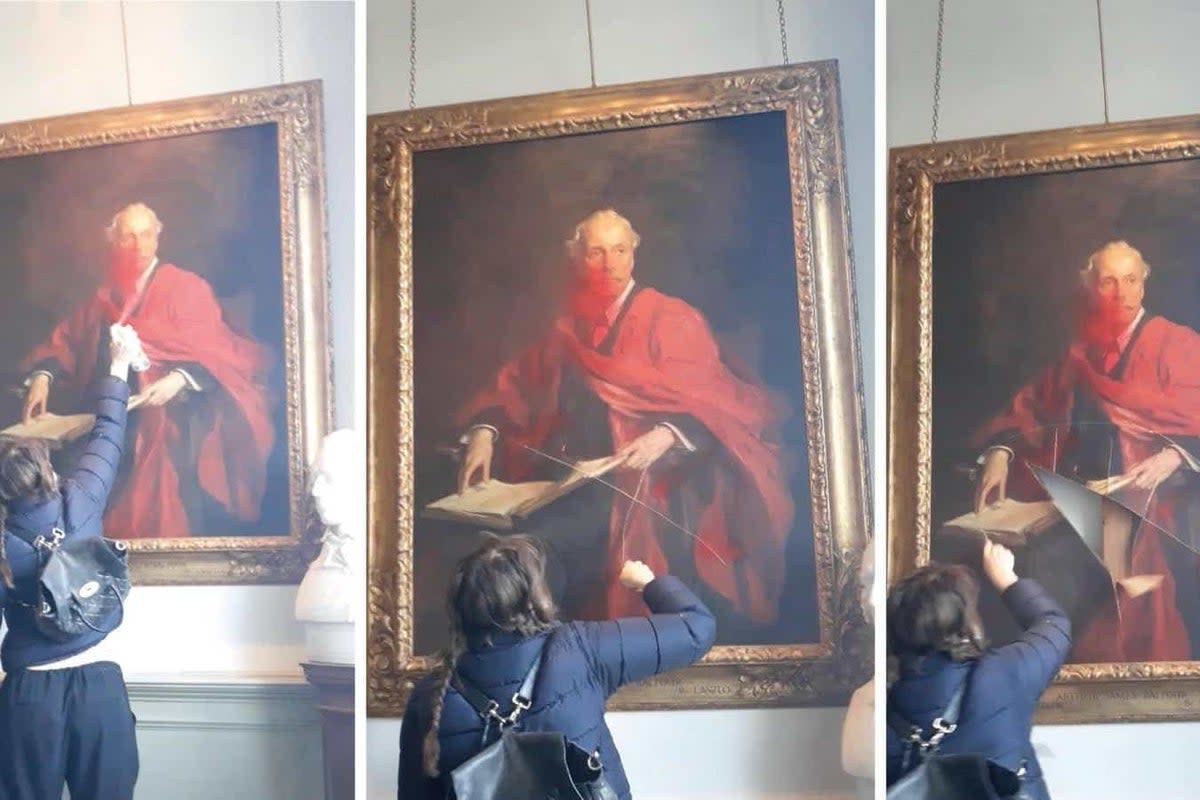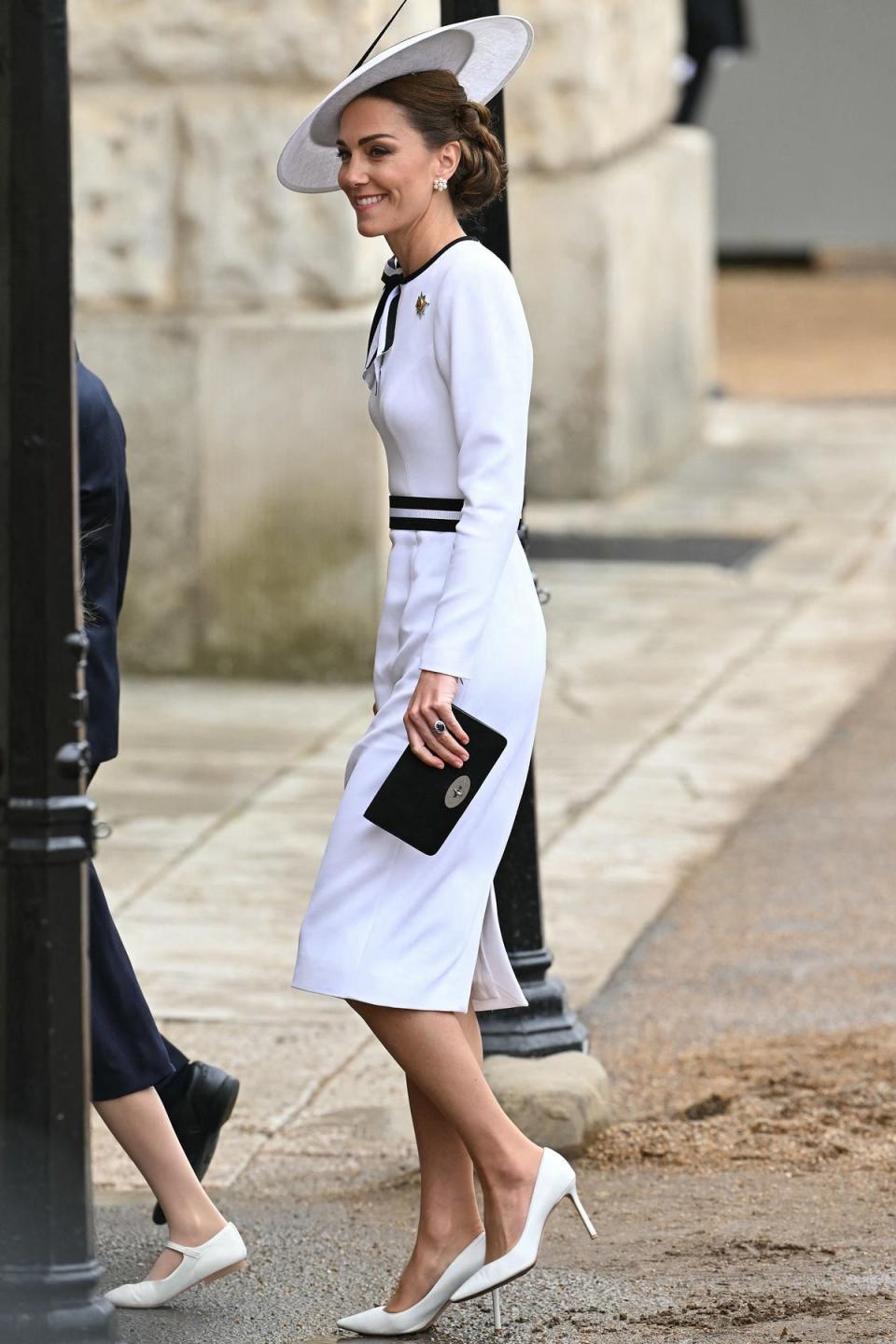OPINION - Why is Trinity College Cambridge so silent about one of its portraits being destroyed by Palestine Action?

On March 8, an unnamed woman, part of a group called Palestine Action, attacked a painting of Lord Balfour at Trinity College, Cambridge. (Balfour studied there from 1866-69: this must be the connection). She cut it seven times with a knife and sprayed red paint over Balfour’s face. All this was filmed for some gruesome archive. The painting’s crime, of course, is that it pictured the man who authored the Balfour Declaration of 1917, which included the line: “His Majesty’s government view with favour the establishment in Palestine of a national home for the Jewish people.” The painting is — or we can assume, was, from the damage — by Philip Alexius de László, a Hungarian-Jewish migrant to Britain. It was a fine painting, if not a great one. We know nothing about the woman who destroyed his work, except she wore plaits — an infant’s hair style — and had a £1,000 bag on her back, by Mulberry if you care.
Trinity College said it “regretted the damage”, in the laconic style of the Establishment when cornered.
Idiotically, an article on a site called Artforum said Balfour’s, “1917 pledge of support cleared a path for the 1948 founding of Israel and the ensuing Nakba, or “catastrophe,” which forced 750,000 Palestinians from their homes”.
As I see it the painting was destroyed as a substitute for the largest Jewish community on earth
In fact, the British government reneged on the Balfour declaration in 1939, locked would-be Jewish refugees to Palestine in Europe to die, and abstained on the founding of Israel in 1948. Artforum didn’t shed a tear for the painting — some things don’t deserve to exist. I expect nothing from Artforum, and nothing from “protesters” who employ the tactics of fascism — political violence is fascism — while claiming fascism is the very doctrine they protect us from. They don’t know yet that the end becomes the means, which is why throwing milkshake at Nigel Farage is a terrible thing.
Still, it’s fashionable to hide the face and attack whatever you fear in the service of some unimpeachable, theoretical good. Just Stop Oil activists attacked Diego Velazquez’s Rokeby Venus and Vincent van Gogh’s Sunflowers. I thought the last was particularly awful — Van Gogh knew a lot about suffering, and adored landscapes, as they also claim to do.
Even so, they didn’t damage these works. From my perspective, the de László portrait was destroyed, as a substitute for the largest Jewish community on earth. I used to think activist destruction of art upset me, because we are in denial about the problems we face. I still believe that, and I think they believe it more than I do. They don’t know how to fix it, and the destruction becomes something only for itself.
I am keen to know the fate of the Balfour portrait, but it isn’t public knowledge. I sent four emails to Trinity College, Cambridge. They answered none of them. I called the Cambridgeshire police. The operator told me to ring back as the duty media officer was unable to help. I’m grateful for any encounter with the police that doesn’t end with a frightened cow being tossed off a panda car in Surrey, but what is Trinity College’s excuse for its silence? My guess — and I can only guess — is that they will not allow themselves to be seen to care about an artefact of Jewish significance these days.
If I am wrong — and I hope I am — perhaps they will say so.

Weaponised jam and confected feuds
The Princess of Wales appeared at Trooping the Colour dressed in homage to My Fair Lady. She has been ill, and cruelly treated by both press and social media ghouls. I sense contrition — no one consciously wants the Princess of Wales to become a cursed position — but this only goes so far. The same day as the glowing coverage, it was reported that the Duchess of Sussex had released a raspberry jam through her lifestyle company. The insinuation is — the duchess is trying to overshadow the princess as she returns to public life, and with weaponised jam. I don’t think the so-called feud between the two is entirely invented but it has been magnified for love of gossip and newspaper sales. If we want royal persons to be well, there should be less of this.
Tanya Gold is an Evening Standard columnist


